In Australia we know it is summer when the Cicadas starts their chorus. Cicadas are the loudest insects in the world and emerge from their underground world in late spring and summer. The peak Cicada season is November and December.
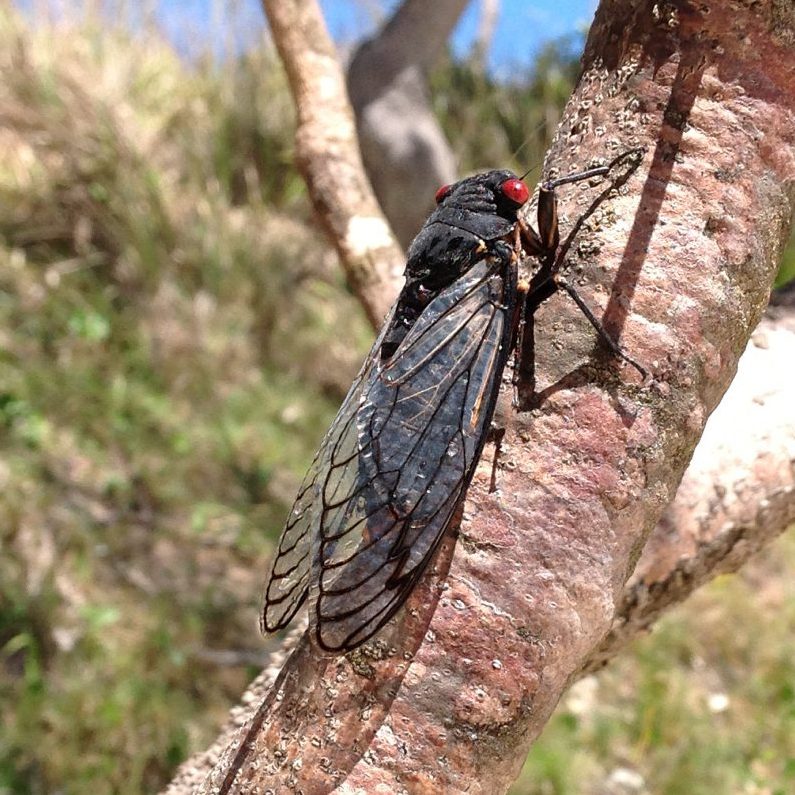
Cicadas spend most of their life underground with many large Australian species living underground as nymphs for around 6-7 years. This is why in certain years some species are more abundant than others, there is often peaks every few years.
Listen out for the sounds of cicadas and keep an eye out for their exoskeletons on trees, walls, fences and shrubs.
The life of an adult cicada is very short, lasting only a few weeks. The female cicada lays its eggs by piercing plant stems and inserting the eggs into the slits it has made. The eggs hatch and are small, wingless nymphs. They fall to the ground and burrow below the surface. They live on the sap from plant roots and when the nymph reaches full size it digs its way to the surface. The nymphs then climbs on to a tree trunk or other object and sheds its skin for the last time. The fully-winged adult cicada which emerges leaves its old empty skin behind.
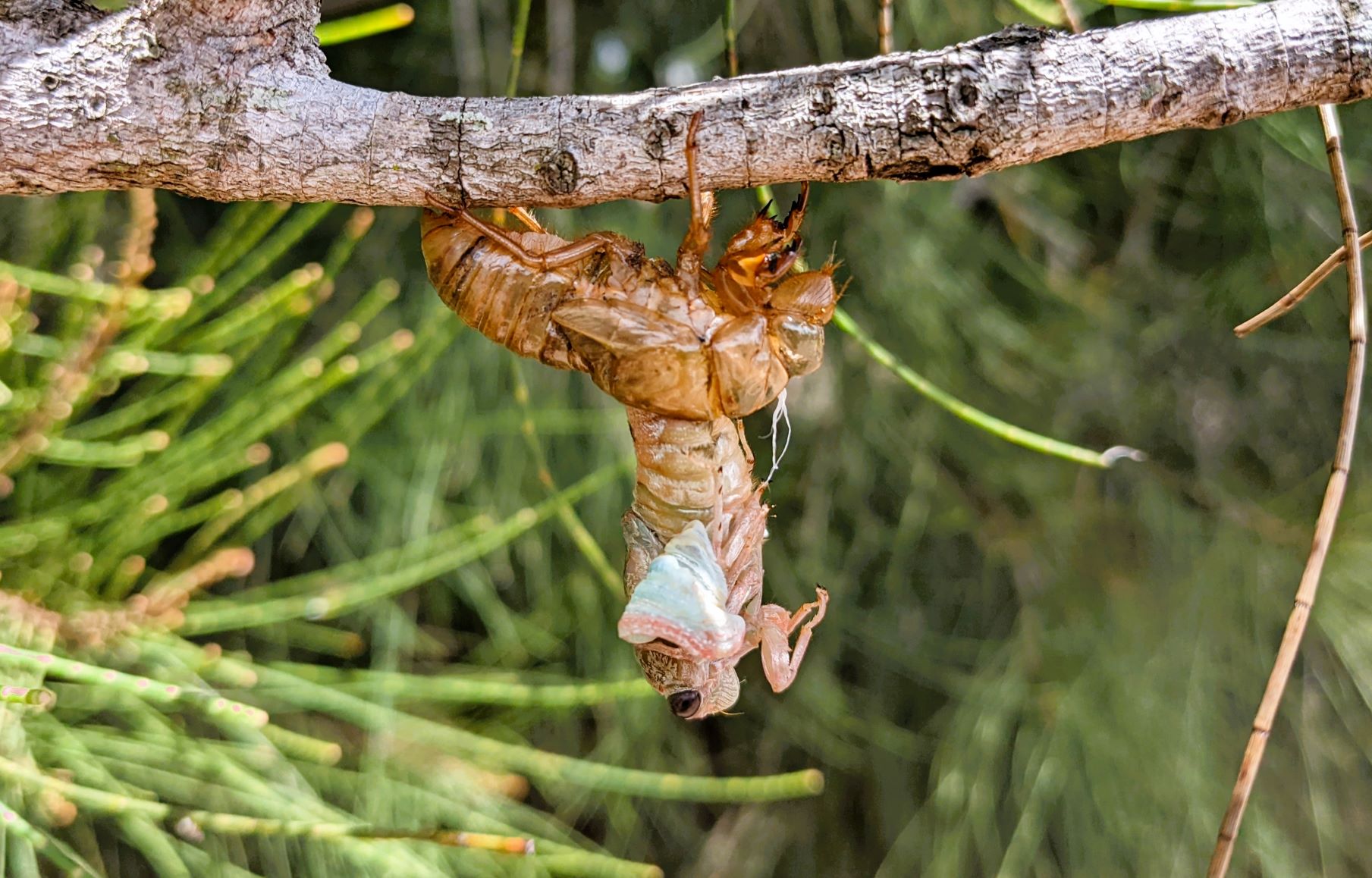
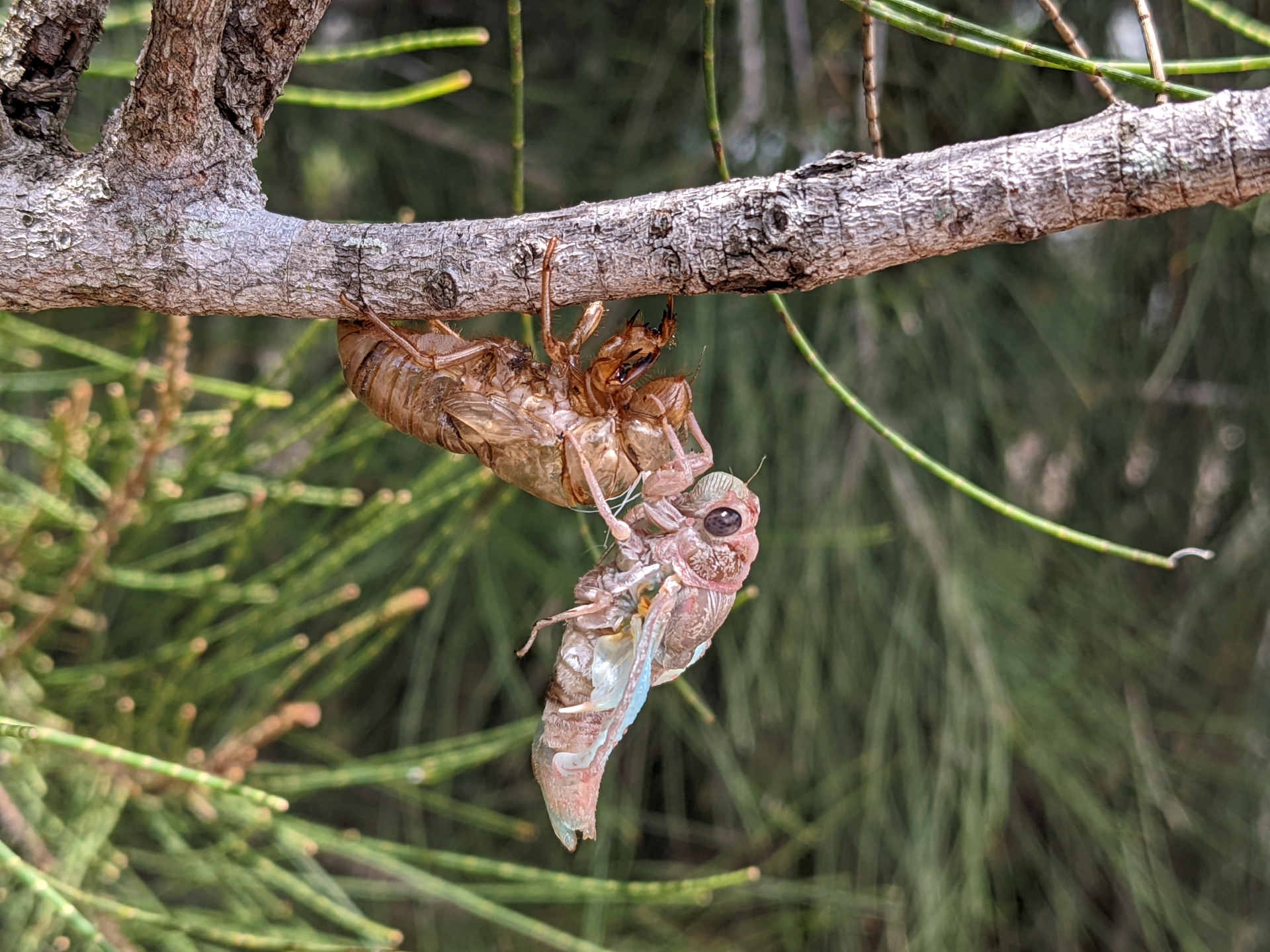
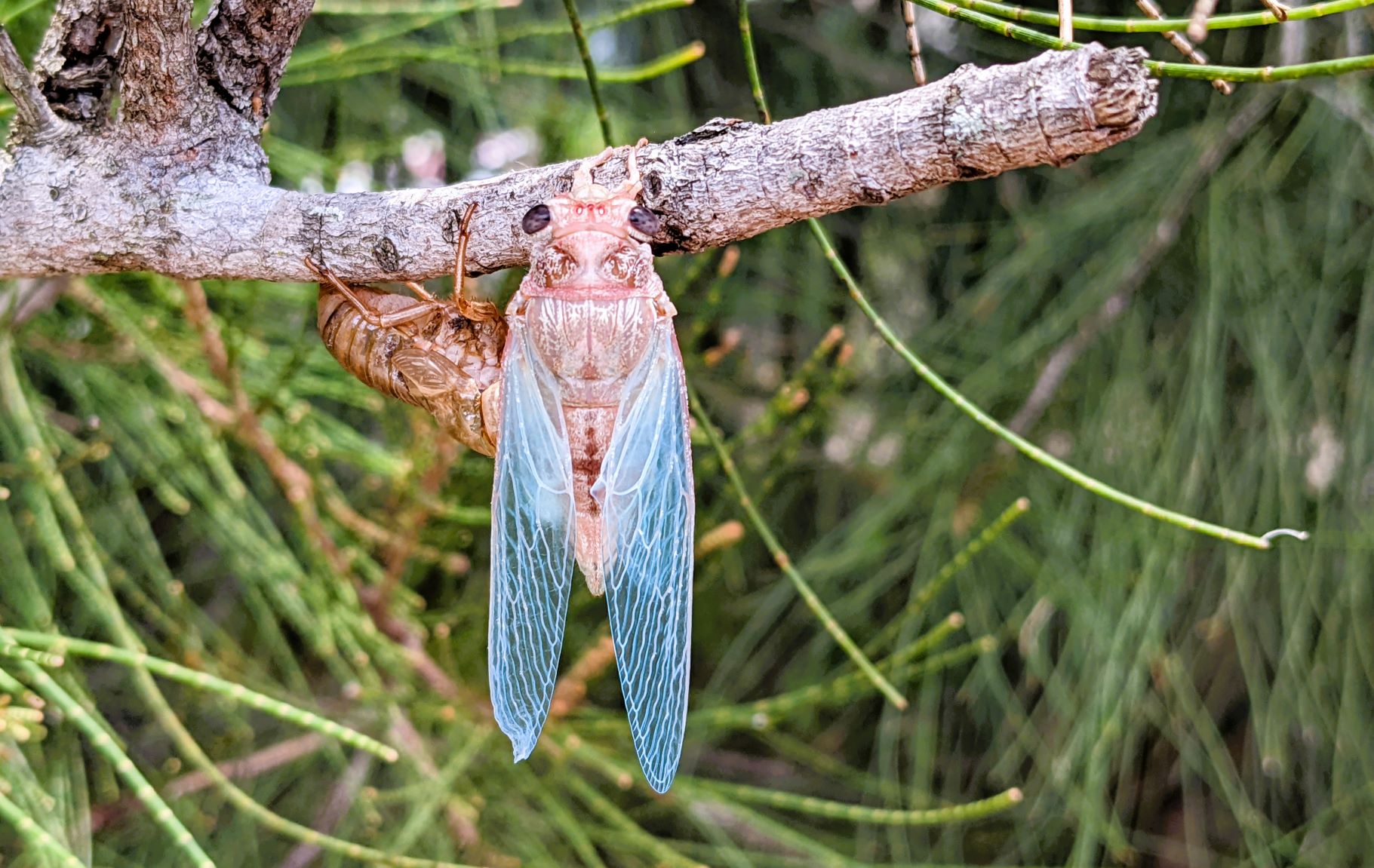
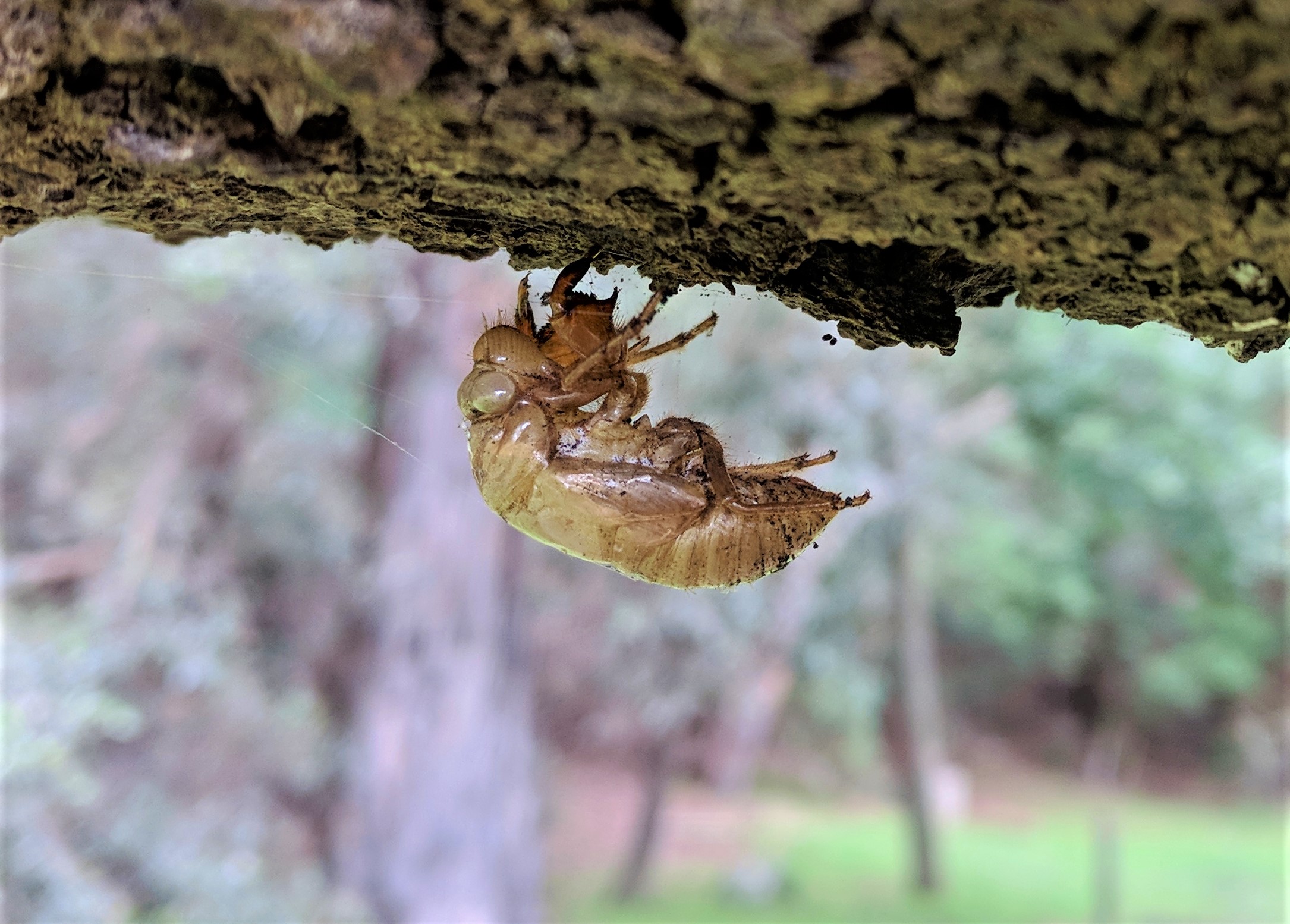
Watch the Cicada Lifecycle video form the Smithsonian’s National Museum of Natural History.
Did you know?
- Australia has an estimated 750 to 1000 species of cicada
- Only male cicadas sing. They do this in an attempt to find a mate.
- Different species have different songs to attract only their own kind.
- Adult cicadas have short lives, usually only a few weeks.
- Most of their lives are spent as nymphs underground. For some species this can be up to several years.
- Cicadas feed only on plant sap using their piercing, sucking mouthparts.
- Cicadas feed on a huge range of plants, including eucalypts and grasses.
- Birds, bats, spiders, wasps, ants, mantids and tree crickets all prey on cicadas.
I heard a weird cicada sound during a walk around the Badu Wetlands in Sydney Olympic Park. As I got closer, I discovered a Praying Mantis devouring a cicada.
If you love cicadas too follow Cicadarama. They are an Australian-based project focused on learning about the lives of cicadas. They need your help, become a Citizen Scientist and log your Cicada sighting. https://www.cicadarama.com/

